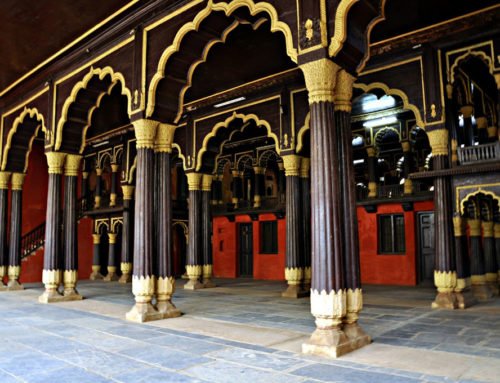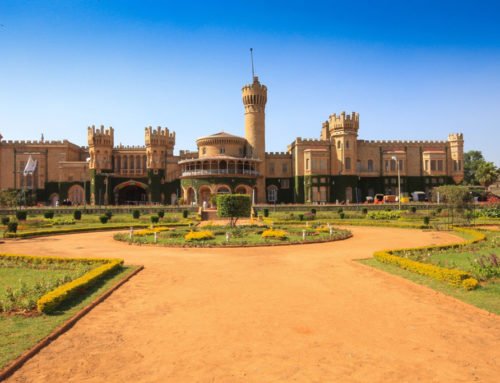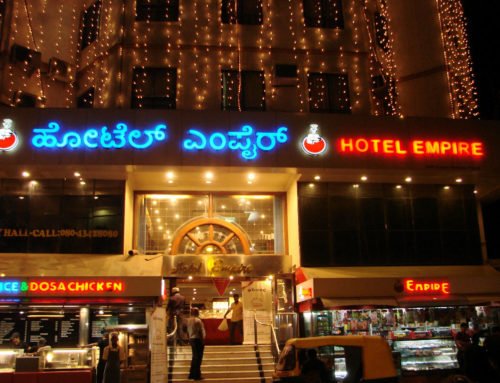Overview
- Features: Botanical gardens with rare species of plants brought from other countries
- Opening Times: 6am to 7pm, daily
- Best Time to Visit: March to April
- Duration: 1 to 2 hours
- Travelled By: Bus
- Cost: Rs 10
- Address: Lalbagh & Hosur Main Road, Bangalore, Karnataka, India
- Type: Garden
Author Reviews[display_rating_item_results rating_form_id=”2″ rating_entry_ids=”1″ show_category_filter=”false” show_options=”true” result_type=”star_rating” preserve_max_rating=”true” show_title=”false” show_count=”false” ]
Total Rating: [display_rating_result rating_form_id=”2″ show_count=”false” show_rich_snippets=true] [accordions load=”1″] [accordion title=”User Reviews” last] [display_rating_item_results rating_form_id=”5″ show_options=”true” result_type=”star_rating” preserve_max_rating=”true” show_title=”false” show_count=”true” show_rich_snippets=true] [/accordion] [accordion title=”Add Review”][display_rating_form show_email_input=”true” show_comment_textarea=”true” show_name_input=”true” rating_form_id=”5″] [/accordion] [/accordions]
Summary
Lal Bagh Botanical Garden, meaning “The Red Garden” in English, is a popular botanical garden in Bangalore. The highlights of this garden are the famous Glass House, the Rock, the Floral Clock, the Statue Garden, the Lake and the Japanese Garden.
Lal Bagh Botanical Garden
Lal Bagh or Lal Bagh Botanical Garden, meaning “The Red Garden” in English, is a popular botanical garden in Bangalore. Spread over 96 acres of landscaped terrain, the expansive Lal Bagh botanical garden was originally commissioned by Hyder Ali, the ruler of Mysore, in 1760, and later finished by his son Tipu Sultan.
Regarded as one of the most richly diverse botanical gardens in South Asia, Lal Bagh botanical garden is second in India only to Kolkata’s in size. It houses India’s largest collection of tropical plants, has an aquarium and a lake, and is one of the main tourist attractions in Bangalore.
[singlepic id=1491 w=720 h=560 float=center]
[singlepic id=1500 w=720 h=560 float=center]
Hyder Ali decided to create this garden on the lines of the Mughal Gardens that were gaining popularity during his time. Tipu Sultan added to it a horticultural wealth of plants and trees imported from many countries (there are over 1800 species of tropical, subtropical and medicinal plants). Later, John Cameron, the Garden’s Superintendent in 1870’s, imported several more rare species from Kew Gardens in London.
[singlepic id=1492 w=720 h=560 float=center]
Cameron was also responsible for initiating work on Lal Bagh botanical garden’s famous Glass House, modelled on London’s Crystal Palace and conceived as a venue for horticultural shows. Surrounded by champaka trees and pencil cedars, the Glass House has played host to several visiting dignitaries. An Annual Flower Show is still held here in January and August every year to mark Republic and Independence days.
[singlepic id=1497 w=720 h=560 float=center]
The entrance to the park is marked by an equestrian statue of Chamaraja Wodeyar of Mysore. Another popular attraction is the surreal Floral Clock, surrounded by Snow White and the seven dwarfs; this was a gift from Hindustan Machine Tools, leading Indian manufacturer of watches.
[singlepic id=1494 w=720 h=560 float=center]
[singlepic id=1499 w=720 h=560 float=center]
The park has some rare species of plants brought from Persia, Afghanistan and France. With an intricate watering system for irrigation, this garden is aesthetically designed, with lawns, flowerbeds, lotus pools and fountains. Most of the centuries old trees are labelled for easy identification.
In the middle of the gardens stands a 200 year old white silk cotton tree brought from China that has grown to a height of 25 to 30 metres. Huge scarlet orange fleshy flowers bloom during the spring. White silk cotton sticks obtained from the fruits can be used to make pillows and bed linen.
The Lal Bagh Rock, one of the oldest rock formations on earth, dating back to 3,000 million years, is another attraction.
[singlepic id=1498 w=720 h=560 float=center]
[singlepic id=1495 w=720 h=560 float=center]
Another attraction in Lal Bagh botanical garden is the Lal Bagh Lake spread over an area of 30 acres. It is covered with greenery and colourful seasonal flowering trees which add to the beauty of the lake. Many aquatic animals and several types of native and migratory birds take shelter in the lake surroundings.
[singlepic id=1493 w=720 h=560 float=center]
To the south, there is a Japanese garden that houses several variety of bonsai plants and other native Japanese plants and trees. The entrance gate to the garden is really pretty and is shaped like a Japanese temple.
[singlepic id=1501 w=720 h=560 float=center]
At dusk, Lal Bagh botanical garden is popular with businessmen speed-walking off their paunches, and courting couples and newlyweds who sit on the banks of the lotus pond holding hands. The rocky knoll around the Kempe Gowda tower has great city views, and is popular at sunset. There are fortnightly Sunday evening performances of Kannada folk theatre, song and dance.
Getting to & from Lal Bagh Botanical Garden
There are several ways to get to Lal Bagh botanical garden. The most affordable way is to take a bus that will drop you in front of Lal Bagh main gate. The most convenient and quickest way is to take an auto rickshaw or taxi straight to the Lal Bagh main gate. It is also possible to hire a private car with a chauffeur for your entire day’s travel from a reputable hotel or travel agency in town.
Lal Bagh botanical garden remains open daily from 6:00 am to 7:00 pm throughout the year. For the benefit of joggers, tourists and fitness enthusiasts, entry is free from 6:00 am to 9:00 am and from 6:00 pm to 7:00 pm. At other times, a fee of Rs.10 is charged. Entry for school children and the disabled is free all day.







My wife and I live in Bangalore and we visit these gardens often. It’s our favourite place to get away from the hustle and bustle of city life. Taking a walk around the lake is our favourite pasttime here.
Hi Satish,
Thanks for sharing. 🙂
Indeed, the Lal Bagh Botanical Garden is one of the best places in Bangalore to get away from the craziness of the city. The air is so fresh here which is why there are so many joggers and walkers getting their daily exercise.